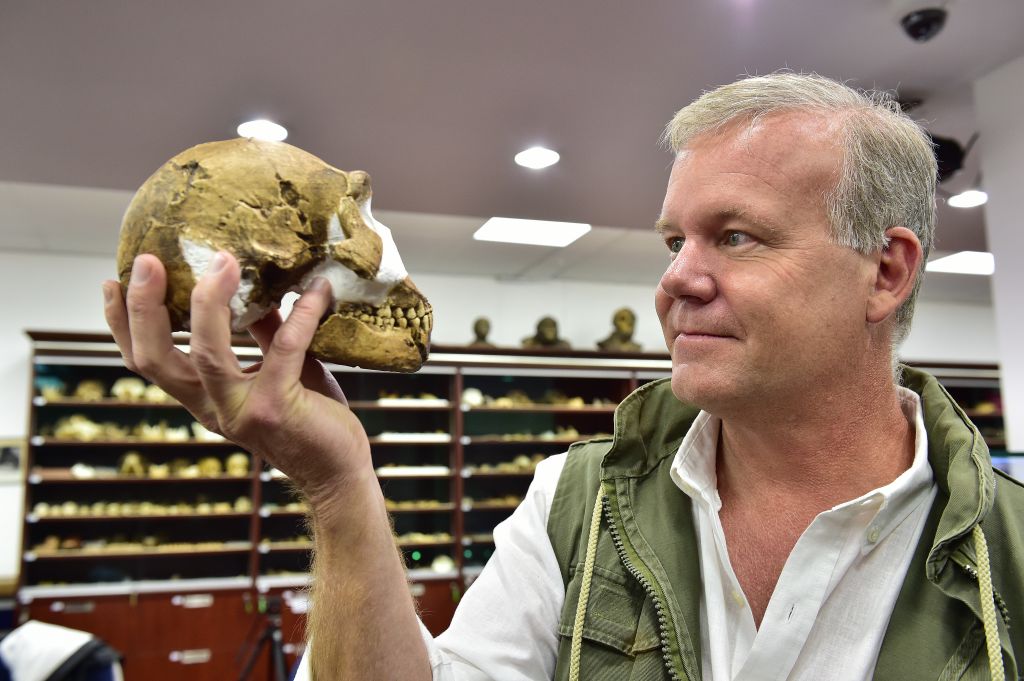Homo naledi discovery hailed as one of 2015’s scientific milestones
Scientists and researchers all over our amazing planet are constantly making new discoveries that will impact the lives of the 7.3-billion humans who occupy Earth. At the end of every year the Current Science & Technology team at the Museum of Science in Boston, Massachusetts, selects its top 10 science stories that made headlines across the globe during the past year, a list that this year included Wits’ palaeoanthropologists’ discovery of Homo naledi.
Although it was bumped off the number one spot by NASA’s New Horizons spacecraft arriving at Pluto after a nine-year journey, the discovery of Homo naledi made it to number two on the list of the world’s most significant milestones in the world of science.
Homo naledi also cracked the nod on The Greatest Scientific Breakthroughs of 2015 on the www.ranker.com site as one of the greatest scientific breakthroughs of 2015, along with a list of other fascinating events, shared below.

The New Horizons spacecraft’s first flyby of Pluto was rated the top event by Museum of Science. After nearly a decade travelling on a mission within our galaxy, the NASA craft revealed, for the first time, a close-up view of the pitted and cratered dwarf planet that lies 3-billion miles away from Earth.
Also out in space, reserachers at the University of California, Berkeley announced the discovery of HD-106906b, a new planet 11 times bigger than Jupiter. They also pondered the existence of twin Earth-like planets that could share life, in an adjacent solar system.
A new phase of carbon, called “Q-carbon”, was discovered by researchers at the University of North Carolina in the United States. This new form of carbon could have positive implications in the world of electronic display technology. Q-carbon enabled the researchers to create a diamond at room temperature.
The newest addition to our family tree introduced the discovery of Homo naledi at the Cradle of Humankind. In a hard-to-reach cave our human relative lay waiting to be revealed to the world. With a small skull yet hands like those of modern humans, the fossil posed quite a challenge to anthropologists when it came to classification.
The long-standing debate around quantum entanglement – the ability of particles to communicate with each other faster than the speed of light – was finally laid to rest in 2015. A team of researchers in the Netherlands used experiments to demonstrate the instantaneous process, akin to teleportation, unfolding. The confirmation of quantum entanglement has created opportunities for more secure networks and forays into quantum computing.
Clustered regularly interspaced short palindromic repeats (CRISPR) technology has afforded the scientific community the ability to edit DNA in increasingly diverse ways. From generating insulin-producing bacteria to eradicating malaria-carrying mosquitoes, CRISPR has far-reaching implications in the medical health realm. As is often the case with major breakthroughs, the technology raises a host of ethical considerations.
Remaining in the medical realm, doctors have used cells from human donors to build a new set of vocal cords. The cells were stimulated to form tissue that mimics vocal fold mucosa, the flaps in the larynx that enable speech. People who have lost their speech due to vocal cord damage or loss, stand to benefit.

As has long been predicted by climatologists and meteorologists, the increasingly destructive effects of the El Niño weather phenomenon are become more prevalent. Heated ocean currents are causing warm water to pile up in the eastern Pacific Ocean. This warm surface water is fodder for hurricanes, which is why Hurricane Patricia strengthened so quickly and sustained the highest wind speeds ever measured in a tropical cyclone in the Western Hemisphere. It hit in October 2015.
New evidence shows that bacteria living in colonies are able to communicate using electrical signals via ion channels, similar to the way in which human nerve cells communicate. Having this knowledge creates the possibility of preventing or interrupting this communication as part of future medical treatment for conditions such as bacterial infections.
The 7.8-magnitude earthquake that struck Nepal in April, killing over 9 000 people and injuring 20 000 more, was one of the world’s biggest stories of 2015. Geologists now have a better understanding of why large buildings that had withstood past earthquakes toppled, while smaller ones remained.
It has long been suspected that there might be water on Mars. The proof came in the form of satellite data from the Mars Reconnaissance Orbiter that uncovered the first direct evidence of liquid water flowing on Mars in the present day. The confirmation was made by analysing chemicals that had been deposited by briny water flowing downhill on the planet’s red surface.
As our technology continues to develop at an amazing rate, so too must regulations governing the use of such technology. Hitting the headlines this year were many stories relating to net neutrality, or the equal distribution of Internet speed.
Virgin Media has developed a new online concept which it has dubbed “Wi-Fi sidewalks”. The streets of Chesham’s town centre in Buckinghamshire, England, are the first beneficiaries of this new technology. Pedestrians and local coffee shop patrons will be able to surf the Net super-quickly, and the service will apparently be fast enough to download a 45-minute episode on a video-streaming site in 35 seconds.
Israel opened its fourth and largest reverse-osmosis plant responsible for converting sea water to tap water. This means that Israel now gets 40% of its fresh water by removing the salt from seawater. An Israeli engineer also designed the largest desalination plant in the Western Hemisphere at Carlsbad near San Diego, which has been delivering water to San Diego County since December 2015.
Alien structures may have been discovered by the Kepler Space Telescope in October 2015. A star named KIC 8462852 features so-called “harbour structures” that appear to have been built by intelligent life. Astronomers say the cluster of objects appears to be something that we “would expect an alien civilisation to build”.
As we depart 2015 and head into 2016, perhaps we might finally receive confirmation that we – and our hominin ancesters – are not the only form of intelligent life in the known universe.